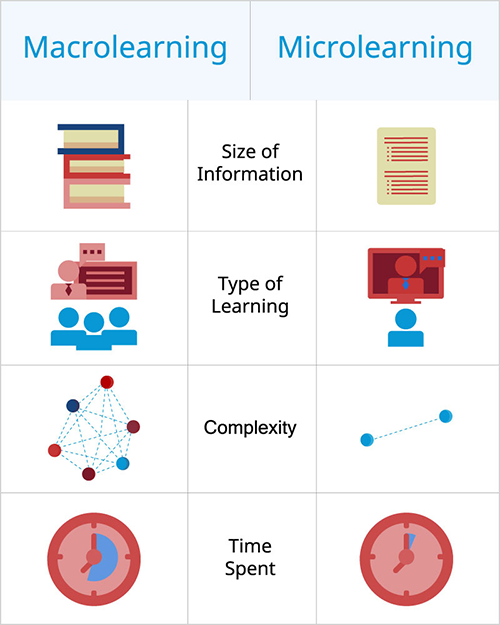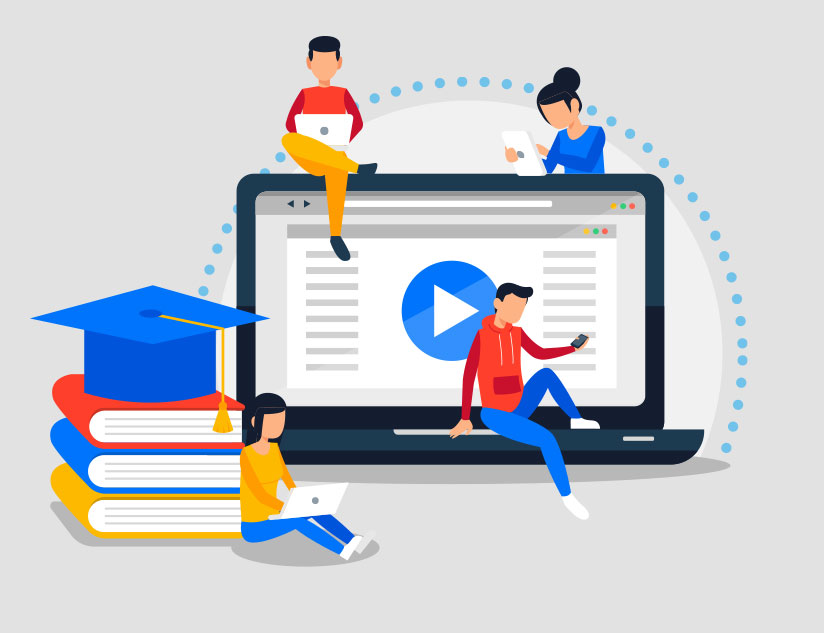How Microlearning Makes Remote Learning More Effective
May 31st, 2021
Given the declining attention spans across the board, bite-sized chunks of learning is possibly the best way to ensure that focus is sustained through the entire piece of information. It isn’t just Gen Z that has an attention span that is lower than that of a goldfish, even Gen X and Millennials have become impatient, wanting everything instantaneously. In fact, data released by Statistic Brain revealed that in 2020, the average attention span of the human population was just 12 seconds.
Microlearning is a more engaging, less time-consuming, and cheaper-to-produce method of eLearning that helps learners achieve their goals more easily. It is a skills-based approach that delivers learning in highly-focused but small chunks. This gives the learner quick answers to their questions regarding a concept.
Microlearning Hits the Mark Every Time
Faster Delivery
Microlearning allows you to build an entire course with dozens of units very quickly. With fewer things to write and only the necessary bits of information included, it also means shorter course delivery times. This way you can quickly design courses and adapt them to changing academic or business goals. And if you have the support of a powerful course authoring tool, with built-in themes and templates, you could even cut content creation time by 40%, plus save on resources.
More Engaging
Easily digestible chunks of information has proven to be exceptionally engaging, similar to checking your favorite social media app on your smartphone. With immersive content for Gen Z, these shorter lessons were preferred by nearly 58% of employees in a recent survey. In addition, a study published in the Journal of Applied Psychology revealed that microlearning proved to be 17% more efficient in knowledge transfer, as compared to traditional classroom instruction.
Boosts Knowledge Retention
The average duration of a microlearning module is 5-15 minutes, making it easy to sustain attention and quickly revisit the information, whenever required. This repeated study significantly improves the retention of knowledge. Research also shows that when information is delivered via short, highly-focused chunks, it is easier to comprehend and recall at a later point.
Flexibility
When microlearning is delivered over a powerful digital learning platform, learners gain the flexibility to move at their own pace, either forward or go back to revise concepts before moving on. They can even casually read through the information chunks in their spare time, since microlearning is ideal for studying in short stints.
Affordability
This method also proves to be cost-effective, as it requires fewer resources and fewer instructors. The short-form content can be tailored, expanded and implemented to suit your needs and budget. It allows you to reduce development costs by 50% and increase the speed of development by 300%.
4 Key Components of Effective Microlearning
When it comes to creating bite-sized courses, content generation and instructional design play an important role. Here are 4 elements that lay the foundation of an effective and successful microlearning course:
1. Engagement – Make It Interactive
When designing a course, make sure to incorporate age-appropriate learning solutions, including quizzes, simulations and gaming elements to develop an interactive learning environment. If you blend both the elements of curiosity and activity, you can create something truly engaging.
2. Relativeness – Use Real-Life Examples
If your learners can’t relate to the content, it might make them lose interest very quickly. You can use these 10- or 15-minute learning bursts to deliver complete concepts, along with relatable examples. When learners connect what they are learning with real life, they can better understand concepts and apply them to solve practical problems.
3. Mobility – Make It Flexible
Microlearning courses are preferred because they allow learners to learn anywhere, anytime, and on the device of their choice. So, your content should seamlessly integrate with standard LMSes and run smoothly on multiple devices.
4. Strategy – Develop Lesson Plans Accordingly
It is important to remember that microlearning is a part of a bigger learning strategy. You can use it to deliver specific topics. But, it is most effective as a reinforcement tool, when you utilize it to create an opportunity for holistic learning. If designed and delivered correctly, this medium has the potential to engage the learners, help them retain information for much longer, and enhance their capacity to apply what has been learned to real-life situations.
Microlearning Applications in Education and Business
Microlearning in Education
Acquiring Knowledge
With microlearning, you can introduce a complex concept in subjects like science, technology, and mathematics by breaking down each concept into its most essential parts. More often than not, students avoid difficult concepts because they feel overwhelmed with the amount of information they need to ingest. But, microlearning breaks the concepts down for easy reading and digesting of information. It helps reduce the cognitive overload and the accompanying student burnout syndrome.
Remembering Knowledge
Bite-sized learning can be a powerful study aid for students. Studies have shown that they can increase information transfer by 17% and result in a greater understanding of the subject. You can use tests, quizzes, and games to assess the retention of topics and further analyze that data to maximize academic outcomes.
Using Knowledge
Microlearning is an effective method when it comes to applying what you have learned. For instance, students can use the audio-visual content to practice a new language in short bursts and repeat the same material until they have grasped it completely. This bite-sized approach has proven extremely helpful for language teachers and schools.
Microlearning in Business
The self-paced learning on mobile-friendly platforms has been particularly helpful for employees across different industries. Businesses have been increasingly using microlearning for several important aspects of their operations, such as Product Knowledge Training, Branding, and Compliance Training. With microlearning, businesses get the advantage of quick and efficient publishing, distribution, engagement, and monetization of their content.
Ready to benefit from the power of microlearning for your educational institution or business? Check out MagicBox™, the award-winning digital learning platform with cutting-edge EdTech features. Contact us today to learn more.












